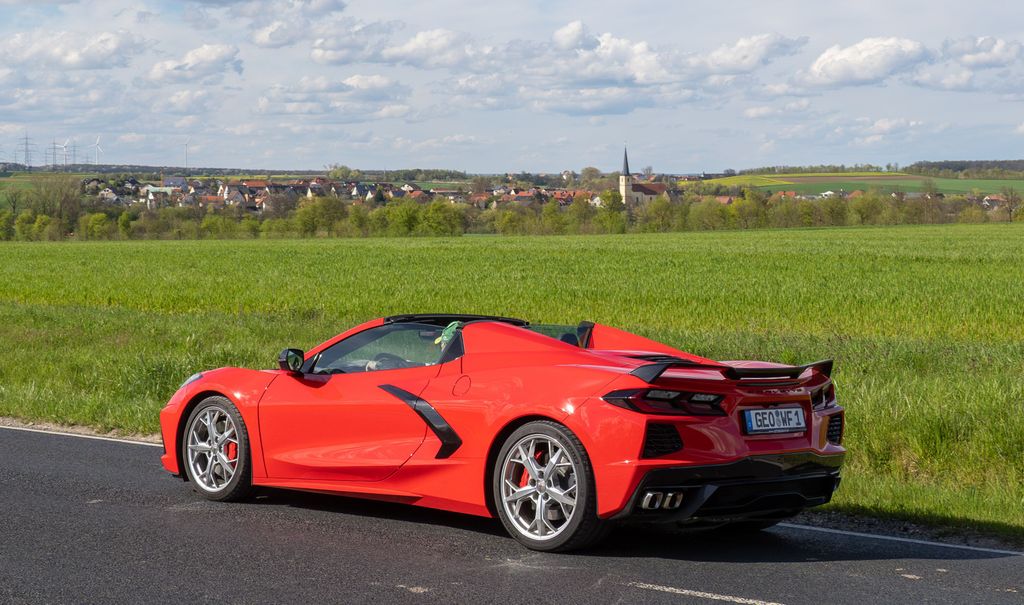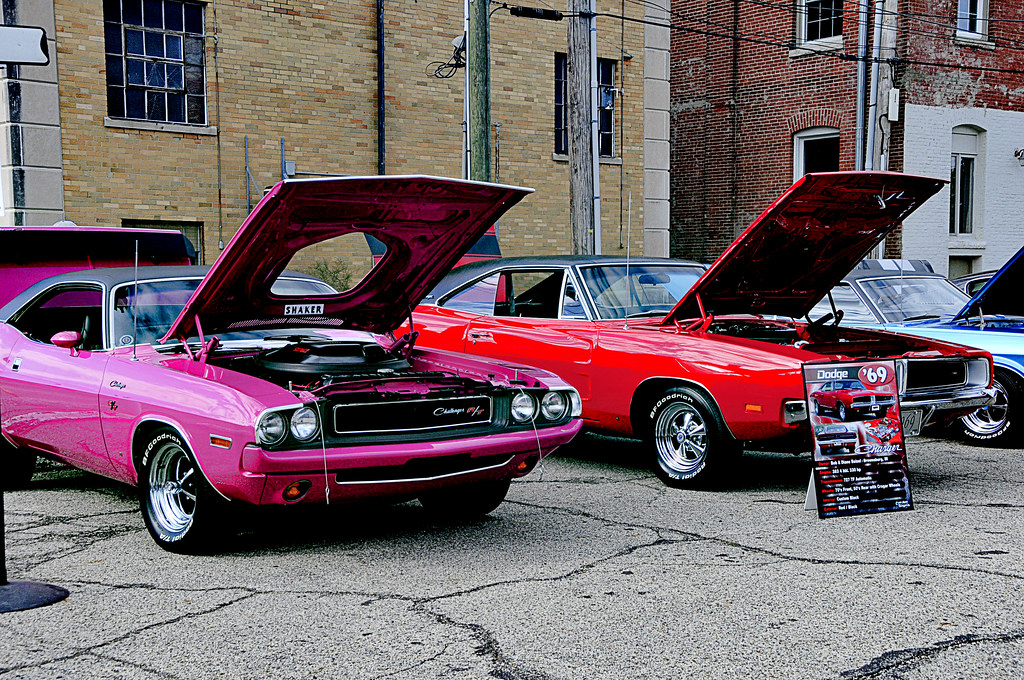
Our collective love for the past is undeniable, often expressed through nostalgic phrases like “blast from the past” or the popular “Throwback Thursday.” There’s an undeniable charm and a unique sense of bliss that older cars evoke, transporting us back to moments of simpler drives and groundbreaking designs. These aren’t just machines; they are cultural icons that encapsulate the very spirit of their time, leaving indelible marks on our automotive consciousness.
Europe, in particular, has been a crucible of automotive innovation, consistently producing some of the most iconic vehicles in history. Its manufacturers have masterfully blended avant-garde design, precision engineering, and exhilarating performance in ways that profoundly shaped entire generations of driving enthusiasts. From the sleek lines of high-performance coupes to the rugged utility of rally legends, the continent’s contribution to the automotive world is immense.
While you won’t find these magnificent machines gracing showroom floors today, their influence endures, having carved out permanent places in the annals of automotive history. They pushed boundaries, redefined expectations, and left lasting impressions on enthusiasts worldwide. Join us as we embark on a journey to revisit seven of these unforgettable European classics that once ruled the roads but have now gracefully retired from production lines, yet continue to captivate with their stories of innovation and impact.
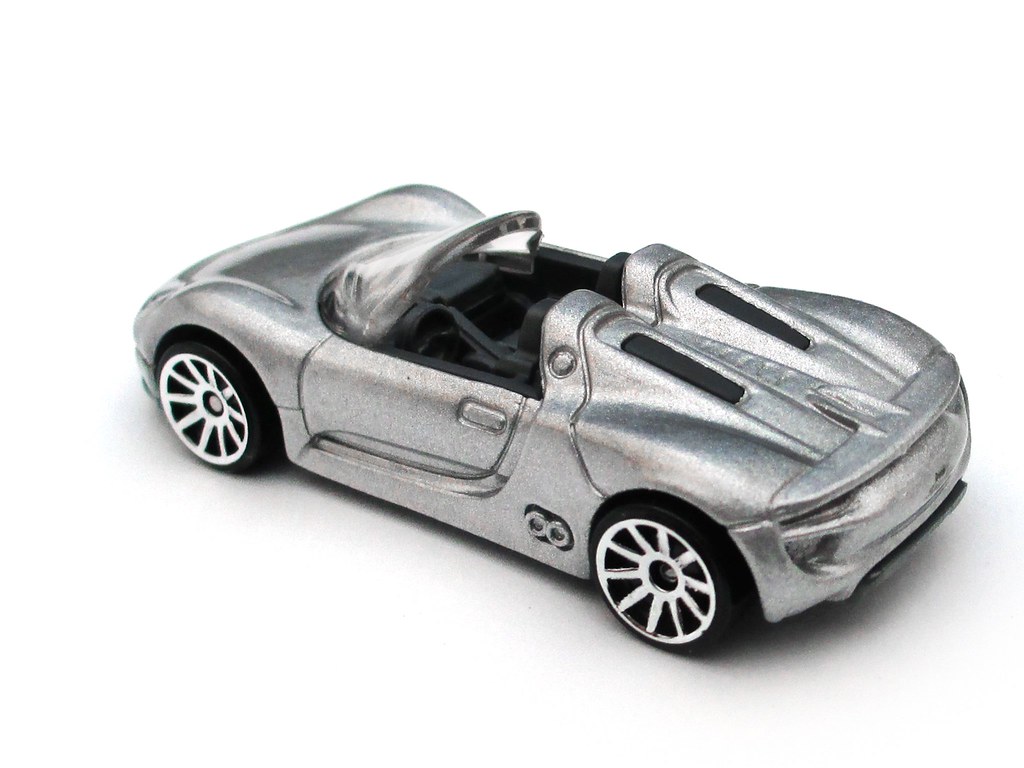
1. **918 Spyder, Porsche**The Porsche 918 Spyder, a marvel of engineering, epitomized the pinnacle of hybrid hypercar technology during its brief but impactful production run from 2013 to 2015. This wasn’t merely a fast car; it was a statement, a bold declaration of what was possible when a high-performance V8 engine was seamlessly integrated with two potent electric motors. The result was a powertrain that generated an astounding 887 horsepower and a colossal 944 lb-ft of torque, figures that even today command immense respect and admiration.
Its performance metrics were nothing short of breathtaking, pushing the boundaries of what was conceivable for a road-legal vehicle. The 918 Spyder could launch from 0 to 60 mph in a blistering 2.6 seconds, a feat that firmly placed it in the exclusive club of the world’s fastest production cars. Its top speed soared past 345 km/h, making it a true speed demon on any unrestricted stretch of asphalt.
Beyond straight-line speed, the 918 Spyder proved its mettle on the most demanding circuits. It famously clocked a sub-7-minute lap on the legendary Nürburgring Nordschleife, a benchmark that solidified its status as a technological tour de force and a true driver’s machine. Though its production was limited, its legacy as a pioneer in hybrid performance continues to inspire future generations of supercars.
Car Model Information: 2023 Honda Civic Sport
Name: Porsche 918 Spyder
Manufacturer: Porsche AG
Production: September 2013–June 2015
ModelYears: 2013–2015
Assembly: Stuttgart,Zuffenhausen
Predecessor: Porsche Carrera GT
Successor: Porsche Mission X
Class: Sports car
BodyStyle: Targa top,coupé
Layout: Mid-engine, four-wheel-drive layout
Doors: Car door#Conventional
Engine: cvt,Porsche V8 engine
Transmission: Dual clutch transmission#Porsche
Battery: lithium-ion battery
Motor: electric motor
Drivetrain: PHEV
Range: EPA
ElectricRange: cvt
Wheelbase: cvt
Length: cvt
Width: cvt
Height: cvt
Weight: cvt
Designer: Michael Mauer
Powerout: cvt
Categories: All articles containing potentially dated statements, Articles containing potentially dated statements from October 2014, Articles with short description, CS1 Dutch-language sources (nl), CS1 German-language sources (de)
Summary: The Porsche 918 Spyder is a high performance sports car manufactured by German marque Porsche. The 918 Spyder is a plug-in hybrid powered by a mid-mounted naturally aspirated 4.6 L (4,593 cc) V8 engine, developing 447 kW (608 PS; 599 hp) at 8,700 RPM, with two electric motors delivering an additional 210 kW (286 PS; 282 hp) for a combined output of 652 kW (875 hp) and 1,280 N⋅m (944 lbf⋅ft) of torque. The 918 Spyder’s 6.8 kWh lithium-ion battery pack delivers an all-electric range of 19 km (12 mi) under the US Environmental Protection Agency’s five-cycle tests.
Production began on 18 September 2013, with deliveries initially scheduled to begin in December 2013, and a starting price of ≈€781,000 (US$845,000 or £711,000). The 918 Spyder was sold out in December 2014 and production ended in June 2015.
The 918 Spyder was first shown as a concept at the 80th Geneva Motor Show in March 2010. On 28 July 2010, after 2,000 declarations of interest, the supervisory board of Porsche AG approved series development of the 918 Spyder. The production version was unveiled at the September 2013 Frankfurt Motor Show. Porsche also unveiled the RSR racing variant of the 918 at the 2011 North American International Auto Show, which combined hybrid technology first used in the 997 GT3 R Hybrid, with styling from the 918 Spyder. However, the 918 RSR did not make it to production. The 918 Spyder was the second plug-in hybrid car manufactured by Porsche, after the 2014 Panamera S E-Hybrid.
Set to be the replacement for the 918, the Porsche Mission X was presented first, at the preamble to the centenary of the 91st 24 Hours of Le Mans, in June of 2023 and to be produced in 2025.
Get more information about: Porsche 918 Spyder
Buying a high-performing used car >>>
Brand: Porsche Model: 918 Spyder
Price: $27,589 Mileage: 27,524 mi.
Read more about: Behind Closed Doors: Unveiling Dwayne ‘The Rock’ Johnson’s Multi-Million Dollar Muscle & Supercar Collection
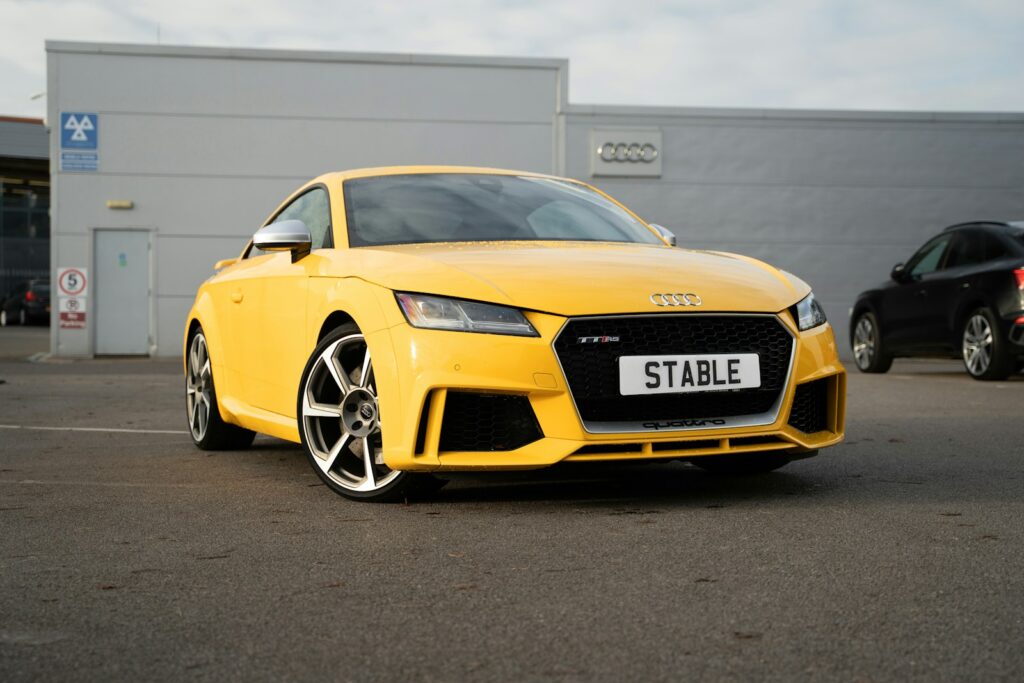
2. **Audi TT, Audi**The Audi TT, a car celebrated for its sleek aesthetics and engaging driving dynamics, made its highly anticipated debut in 1998, instantly capturing the imagination of design aficionados and driving enthusiasts alike. It remained a consistent presence on global roads for an impressive 25 years, a testament to its enduring appeal and its ability to stay relevant in an ever-evolving market. The TT was particularly known for its bold design, which broke away from conventional automotive styling, and its responsive handling, making every drive an experience.
Early versions of the TT offered a thrilling experience, often featuring the formidable VR6 engine that provided a distinctive blend of power and aural pleasure. This engine contributed significantly to the car’s character, offering a performance level that matched its sporty appearance. The combination of its compact size, agile chassis, and spirited engine made the TT a joy to pilot, whether on winding back roads or cruising through city streets.
Despite its storied history and dedicated fanbase, the Audi TT officially ceased production in 2023. This discontinuation marked the end of an era for a car that had become an icon of accessible sports car performance and design. However, the sentiment among enthusiasts is strong, with many hoping for an electric revival that would bring the beloved TT nameplate back to life in a new, future-forward iteration, continuing its legacy of innovation.
Car Model Information: 2019 Audi TT RS 2.5T
Name: Audi TT
Caption: 2019 Audi TT Sport 40 TFSi
Manufacturer: Audi AG
Production: October 1998 – November 2023
ModelYears: 1999–2023
Assembly: Győr
Class: Sports car
BodyStyle: coupé
Layout: unbulleted list
Platform: Volkswagen Group A platform,Volkswagen Group MQB platform
Sp: uk
Categories: 2+2 coupés, 2000s cars, 2010s cars, 2020s cars, All-wheel-drive vehicles
Summary: The Audi TT is a production front-engine, 2-door, 2+2 sports coupé and roadster, manufactured and marketed by Audi from 1998 to 2023 across three generations.
For each of its three generations, the TT has been based on consecutive generations of Volkswagen’s “Group A” platforms, starting with its “PQ34” fourth generation. The TT shares powertrain and suspension layouts with its platform mates, including the Audi A3, like a transversely mounted front-engine, powering front-wheel drive or four-wheel drive, and fully independent suspension using MacPherson struts in front.
The TT’s first two generations were assembled by Audi’s Hungarian subsidiary, one of the world’s largest engine manufacturing plants, using bodyshells manufactured and painted at Audi’s Ingolstadt plant and parts made entirely by the Hungarian factory for the third generation.
The last of the 662,762 Audi TTs was manufactured in November 2023.
Get more information about: Audi TT
Buying a high-performing used car >>>
Brand: Audi Model: TT
Price: $59,988 Mileage: 27,442 mi.
Read more about: 15 Vehicles Owners Wish They’d Never Bought: Your Essential Guide to Avoiding Automotive Regrets
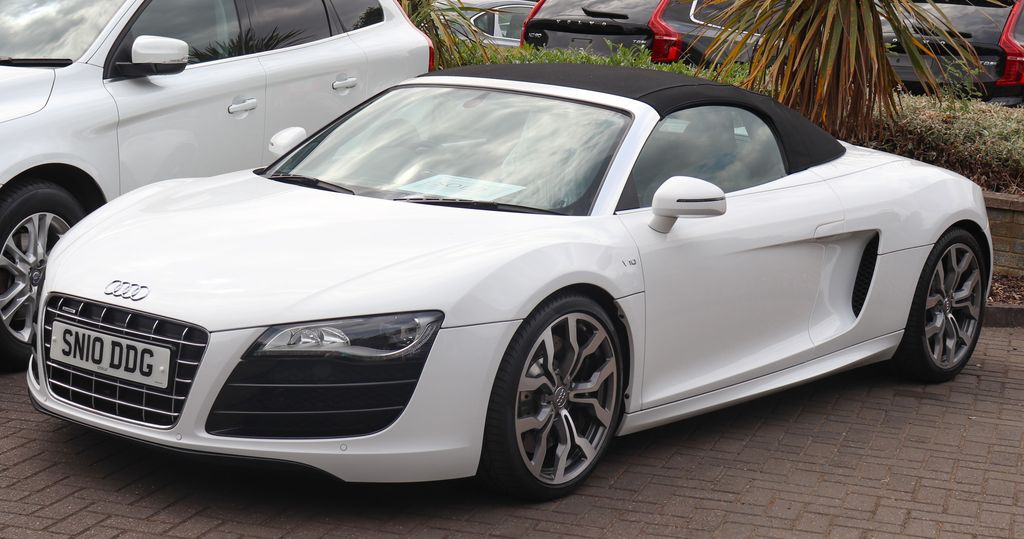
3. **R8, Audi**From 2007 to 2024, the Audi R8 captivated the automotive world as a mid-engine supercar that masterfully balanced thrilling performance with a remarkable degree of daily usability. It defied the traditional supercar stereotype by offering exhilarating speeds and razor-sharp handling without sacrificing comfort or practicality, a combination that made it a unique proposition in its segment. Its distinctive presence and powerful stance were immediately recognizable, establishing it as an aspirational vehicle.
Initially, the R8 launched with a robust 4.2-liter V8 engine, delivering a visceral driving experience and a captivating exhaust note. This power unit laid the foundation for its reputation as a serious performance contender. As its evolution progressed, Audi introduced a more potent V10 engine, a powerhouse that shared its underpinnings with the legendary Lamborghini Gallardo. This shared DNA imbued the R8 with an even greater level of performance, cementing its place among the elite.
Today, with its production having concluded in 2024, the Audi R8 is widely considered a modern classic. Its blend of striking design, supercar performance, and surprisingly approachable character has ensured its status as a highly sought-after vehicle among collectors and enthusiasts. The R8 stands as a testament to Audi’s engineering prowess, showcasing their ability to create an iconic supercar that truly redefined its category.
Car Model Information: 2011 Audi R8 4.2 quattro
Caption: Audi R8 V10 Plus (Type 4S)
Manufacturer: Audi
Production: June 2006 – March 2024,(45,949 Units)
Class: Sports car
BodyStyle: coupé
Layout: Longitudinal engine,Mid-engine design,rear-wheel-drive
Sp: uk
ModelYears: 2007–2024
Categories: 2010s cars, 2020s cars, All articles with unsourced statements, Articles with short description, Articles with unsourced statements from March 2019
Summary: The Audi R8 is a mid-engine, 2-seater sports car, which uses Audi’s trademark quattro permanent all-wheel drive system. It was introduced by the German car manufacturer Audi AG in 2006. Production ended in the first quarter of 2024.
The car is exclusively designed, developed, and manufactured by Audi AG’s private subsidiary company manufacturing high performance automotive parts, Audi Sport GmbH (formerly quattro GmbH), and is based on the Lamborghini Gallardo and presently the Huracán platform. The fundamental construction of the R8 is based on the Audi Space Frame, and uses an aluminium monocoque which is built using space frame principles. The car is built by Audi Sport GmbH in a newly renovated factory at Audi’s ‘aluminium site’ at Neckarsulm in Germany. At the time it was introduced in 2006, the R8 became the first production car with full-LED headlamps.
Get more information about: Audi R8
Buying a high-performing used car >>>
Brand: Audi Model: R8
Price: $69,995 Mileage: 44,740 mi.
Read more about: Remember These? 9 Forgotten Pop Stars from the ’80s Who Shone Brightly with Just One Massive Hit!
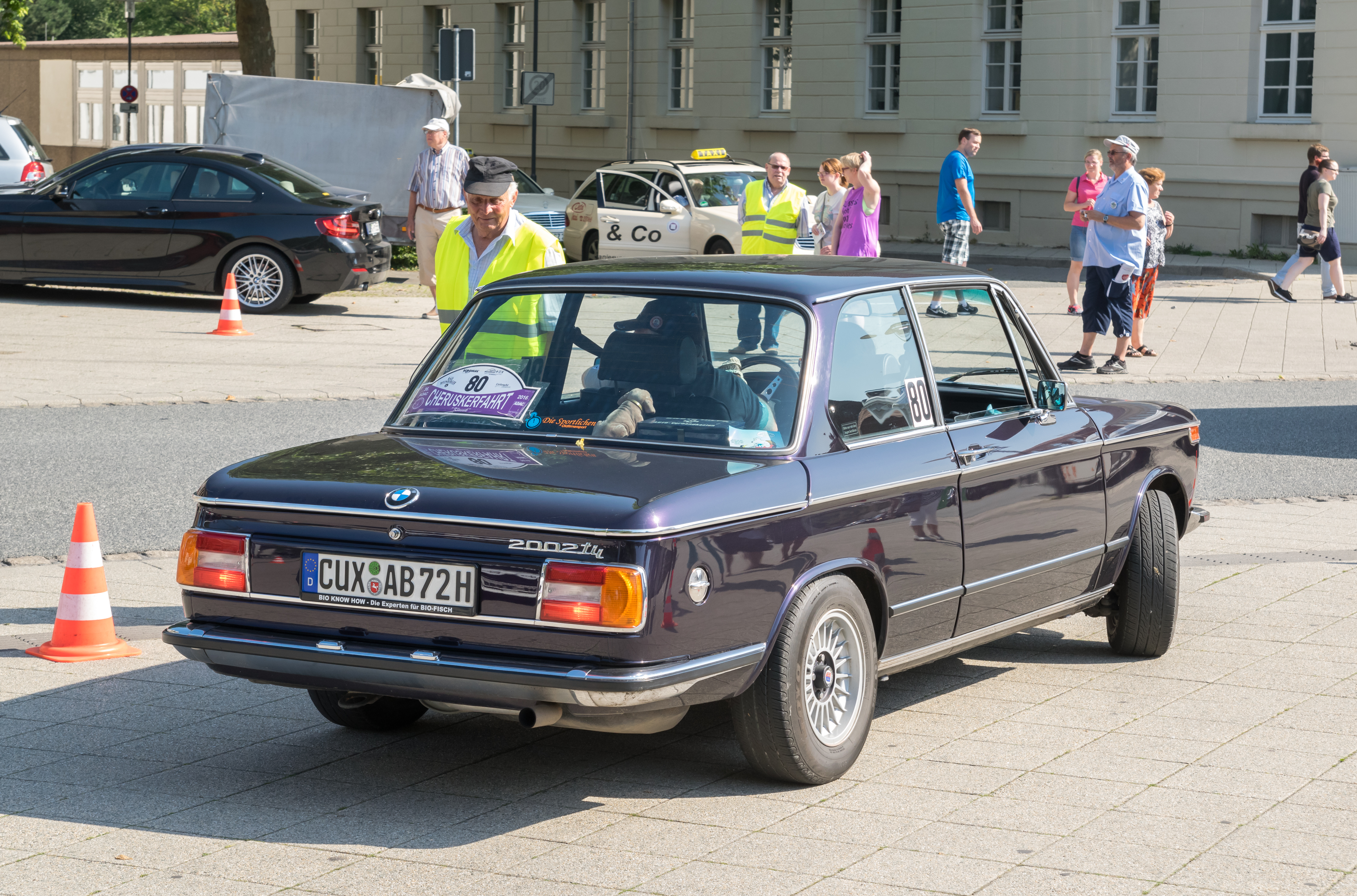
4. **2002 (tii), BMW**The BMW 2002, particularly the highly revered tii variant, played a pivotal role in shaping BMW’s enduring reputation for producing sporty, driver-focused vehicles. Produced between 1968 and 1975, this lightweight coupe was a revelation, offering a sublime driving experience that belied its modest proportions. Its clean, functional design and compact footprint made it an instant classic, appealing to those who valued driving purity over ostentation.
What truly set the 2002 apart was its exceptional dynamic capabilities. Its nimble handling was legendary, allowing drivers to tackle winding roads with confidence and precision. This agility was perfectly complemented by its efficient inline-4 engine, which, despite its relatively small displacement, delivered spirited performance and a delightful mechanical symphony. The combination of these attributes made the 2002 a true driver’s favorite, cherished for its engaging and responsive character.
For decades, the BMW 2002 remained a benchmark for compact sports sedans, influencing countless designs and engineering philosophies. Its minimalist interior focused on driver ergonomics, and its robust mechanics ensured longevity and reliability. Even today, the 2002 tii commands a passionate following, celebrated for its raw driving pleasure and its foundational contribution to BMW’s ‘Ultimate Driving Machine’ ethos.
Car Model Information: 1971 BMW 2002
Name: BMW 02 Series
Caption: BMW 1600-2
Production: 1966–1977,837,038 units
Assembly: Munich
Class: Compact executive car
BodyStyle: 2-door coupé , 2-door convertible , 3-door hatchback
Layout: Front-engine, rear-wheel-drive layout
Engine: ubl
Wheelbase: cvt
Length: cvt
Width: cvt
Height: cvt
Weight: cvt
Transmission: 4-speed manual , 5-speed manual ,3-speed automatic
Successor: BMW 3 Series (E21)
Designer: Giovanni Michelotti
Manufacturer: BMW
Categories: 1970s cars, Articles with short description, BMW vehicles, CS1 German-language sources (de), CS1 Italian-language sources (it)
Summary: The BMW 02 Series is a range of sporty compact executive cars produced by German automaker BMW between 1966 and 1977, based on a shortened version of the New Class Sedans.
The first 02 Series produced was the 1600-2 (later renamed 1602) in 1966. In 1975, the 02 Series was replaced by the E21 3 Series (except for the 1502 model, which continued until 1977).
Get more information about: BMW 02 Series
Buying a high-performing used car >>>
Brand: BMW Model: 2002
Price: $45,550 Mileage: 5,001 mi.

5. **Isetta, BMW**The BMW Isetta, launched in the mid-1950s, is perhaps one of the most unique and historically significant vehicles in the German automaker’s portfolio. Often affectionately referred to as the “bubble-car,” this quirky micro-car played a crucial role in rescuing BMW from financial turmoil in the post-World War II era. Its innovative design and economical operation resonated deeply with a continent rebuilding itself, making it an accessible and practical solution for personal transport.
The Isetta’s distinctive micro-car design was instantly recognizable, characterized by its bulbous, egg-shaped body and, most famously, its single-front door. This ingenious design allowed the entire front of the car, including the steering wheel and instrument panel, to swing open, providing surprisingly easy access to the compact cabin. It was a novel approach that perfectly suited its urban environment, allowing for effortless parking and maneuvering in tight spaces.
Powering this diminutive marvel was a surprisingly nimble 0.3-liter engine, which, despite its small size, was more than adequate for navigating crowded European streets. The Isetta quickly became an instant post-war icon, symbolizing ingenuity, resilience, and the burgeoning desire for personal mobility. Its charm and historical importance ensure it remains a beloved classic, cherished by enthusiasts for its unique place in automotive history.
Car Model Information: 1957 BMW Isetta 300 with Rollback Sunroof
Name: Isetta
Production: Iso Isetta (1953–56),BMW Isetta (1955–62),VELAM Isetta (1955–58),Romi-Isetta (1956–61)
Manufacturer: Iso Autoveicoli,BMW,VELAM,Romi
Layout: MR layout
BodyStyle: Cabriolet,Van,Pick-up
Categories: All articles with dead external links, Articles with dead external links from February 2018, Articles with permanently dead external links, Articles with short description, BMW vehicle series
Summary: The Isetta is an Italian-designed microcar initially manufactured in 1953 by the Italian firm Iso SpA, and subsequently built under license in a number of different countries, including Argentina, Spain, Belgium, France, Brazil, Germany, and the United Kingdom. The name Isetta is the Italian diminutive form of Iso, meaning “little Iso”. Because of its egg shape and bubble-like windows, it became known as a bubble car, a name also given to other similar vehicles.
In 1955, the BMW Isetta became the world’s first mass-production car to achieve a fuel consumption of 3 L/100 km (94 mpg‑imp; 78 mpg‑US). It was the top-selling single-cylinder car in the world, with 161,728 units sold.
Get more information about: Isetta
Buying a high-performing used car >>>
Brand: BMW Model: Isetta
Price: $39,997 Mileage: 4,901 mi.
Read more about: 1950s Car Icons: Bold Designs, Big Dreams, and Real Challenges
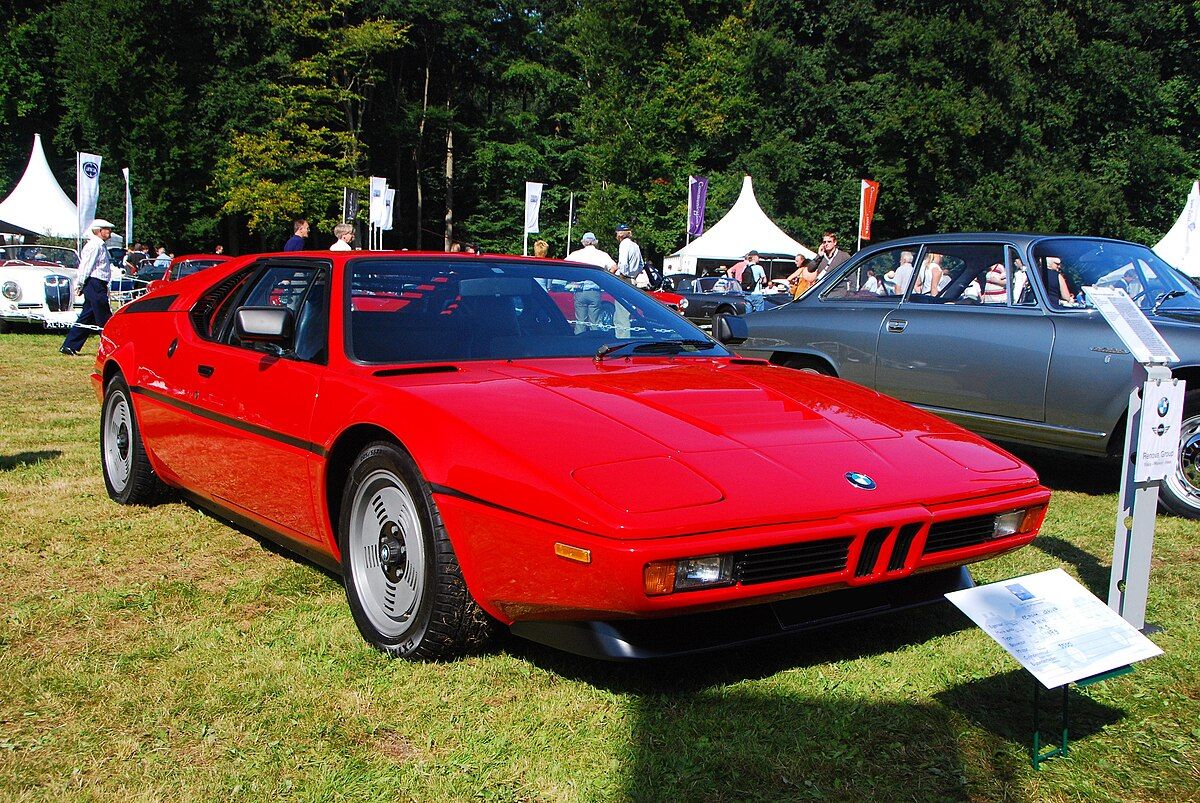
6. **M1, BMW**Produced for a brief but glorious period from 1978 to 1981, the BMW M1 stands as a monumental achievement in the marque’s history: its first-ever mid-engine supercar. Conceived initially as a racing homologation special, the M1 was a bold departure from BMW’s traditional front-engine, rear-wheel-drive philosophy. Its very existence marked an ambitious foray into the supercar segment, demonstrating BMW’s capability to compete with the established Italian giants.
Underneath its sleek, wedge-shaped body, designed by the legendary Giorgetto Giugiaro, lay a formidable 3.5-liter inline-6 engine. This powerplant, a development of BMW’s highly regarded straight-six architecture, delivered an impressive blend of power and refinement, propelling the M1 with a distinctive roar. The Giugiaro styling, characterized by its low profile, sharp lines, and pop-up headlights, gave the M1 an exotic and timeless appeal that still turns heads today.
With only around 450 examples ever produced for both road and racing, the BMW M1 is an exceedingly rare and highly coveted machine. Its scarcity, combined with its groundbreaking status and exquisite design, has made it one of the most collectible BMWs in existence. The M1 remains a powerful symbol of BMW’s engineering ambition and design prowess, a true legend that paved the way for future M-division performance icons.
Read more about: From Humble Beginnings to Electric Dreams: A Deep Dive into Elon Musk’s Electrifying and Eclectic Garage
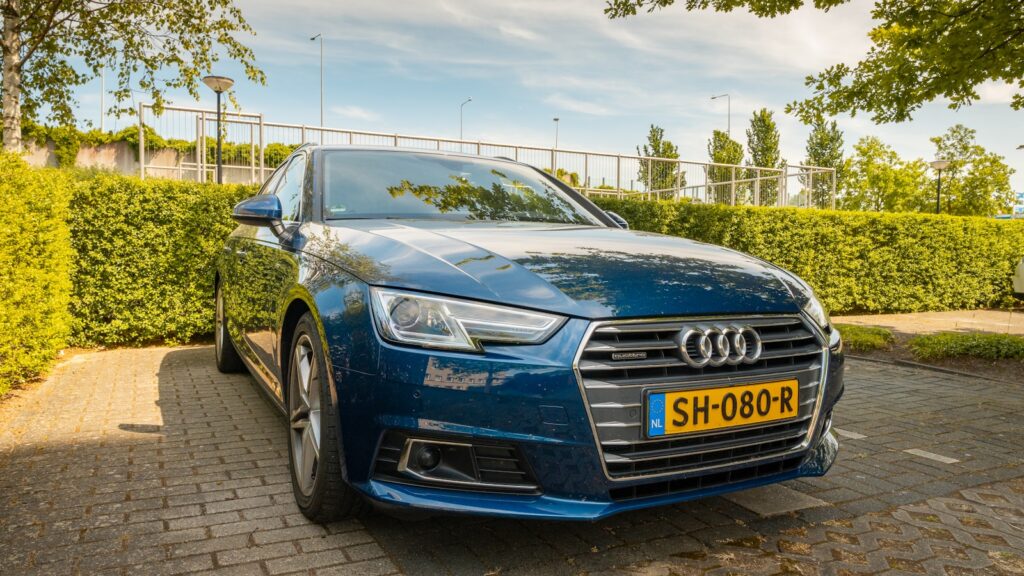
7. **Quattro, Audi**The Audi Quattro, introduced in 1980 and phased out by the 1990s, is a car that fundamentally revolutionized the world of rally racing and, by extension, profoundly influenced the broader automotive industry. Its arrival marked a paradigm shift, proving the immense capabilities of all-wheel drive (AWD) technology in a performance context. Before the Quattro, AWD was primarily associated with utilitarian off-road vehicles; Audi demonstrated its competitive edge on high-speed, challenging rally stages.
Its dominance in the World Rally Championship was legendary and immediate. The Quattro’s ability to maintain traction and deliver power efficiently to all four wheels, regardless of surface conditions, gave it an insurmountable advantage over its two-wheel-drive competitors. This era of Audi’s rally success cemented the Quattro name in the minds of enthusiasts and the public, becoming synonymous with grip, control, and exhilarating performance.
The rally-born legacy of the Audi Quattro still resonates powerfully in modern AWD performance cars today. Its pioneering spirit and proven effectiveness on the global stage spurred countless manufacturers to adopt and develop similar technologies. The Quattro wasn’t just a car; it was a technological statement that changed the game, leaving an indelible mark on motorsport and shaping the very DNA of high-performance vehicles for decades to come. Its influence is a constant reminder of how a single model can redefine an entire segment.”
Having journeyed through some of Europe’s most groundbreaking automotive innovations, from the hybrid prowess of Porsche to Audi’s rally-conquering Quattro, our exploration of legendary vehicles that have gracefully exited production lines is far from over. These machines, while no longer rolling off assembly lines, have etched their names into the very fabric of car culture, each leaving an indelible mark that continues to inspire and captivate enthusiasts worldwide. Their stories are a testament to the diverse ingenuity and enduring appeal of European automotive design and engineering.
In this next segment, we delve deeper into the enduring legacies of eight more automotive legends. We’ll examine their distinctive design evolutions, celebrate their unique performance characteristics, and reflect on their lasting impact on the global automotive landscape. From the dramatic flair of Italian supercars to the humble yet revolutionary practicality of everyday staples, prepare to be reacquainted with icons that, though gone from showrooms, remain vibrant in our collective memory.
Car Model Information: 2018 Audi A7 3.0T Premium Plus
Name: Audi Quattro B2 (85)
Manufacturer: Audi
Aka: Ur-Quattro
Production: 1980–1991,11,452 produced
Assembly: Ingolstadt
Designer: Jörg Bensinger,Walter Treser,Ferdinand Piëch,Franz Tengler (transmission),Martin Smith (designer)
Class: Mid-size car,rallying
BodyStyle: coupé
Platform: Volkswagen B platform#B2
Related: Audi 80#B2
Layout: longitudinal engine,Front-engine, four-wheel-drive layout,all-wheel drive
Engine: SOHC,2.2 L SOHC 10v I5 (turbo) (1987–1989),DOHC
Transmission: manual transmission
Wheelbase: 2524 mm
Abbr: on
Length: 4404 mm
Width: 1722 mm
Height: 1346 mm
Weight: 1290 kg
Sp: uk
Predecessor: Audi 100 Coupé S
Successor: Audi S2
Categories: 1990s cars, All-wheel-drive vehicles, Articles with hAudio microformats, Articles with short description, Audi racing cars
Summary: The Audi Quattro is a road and rally car, produced by the German automobile manufacturer Audi, part of the Volkswagen Group. It was first shown at the 1980 Geneva Motor Show on 3 March. Production continued through 1991.
Get more information about: Audi Quattro
Buying a high-performing used car >>>
Brand: Audi Model: Quattro
Price: $29,795 Mileage: 72,273 mi.
Read more about: Brace Yourself: The 10 Cars That Instantly Trigger ‘Bad Driver’ Alarms on the Road
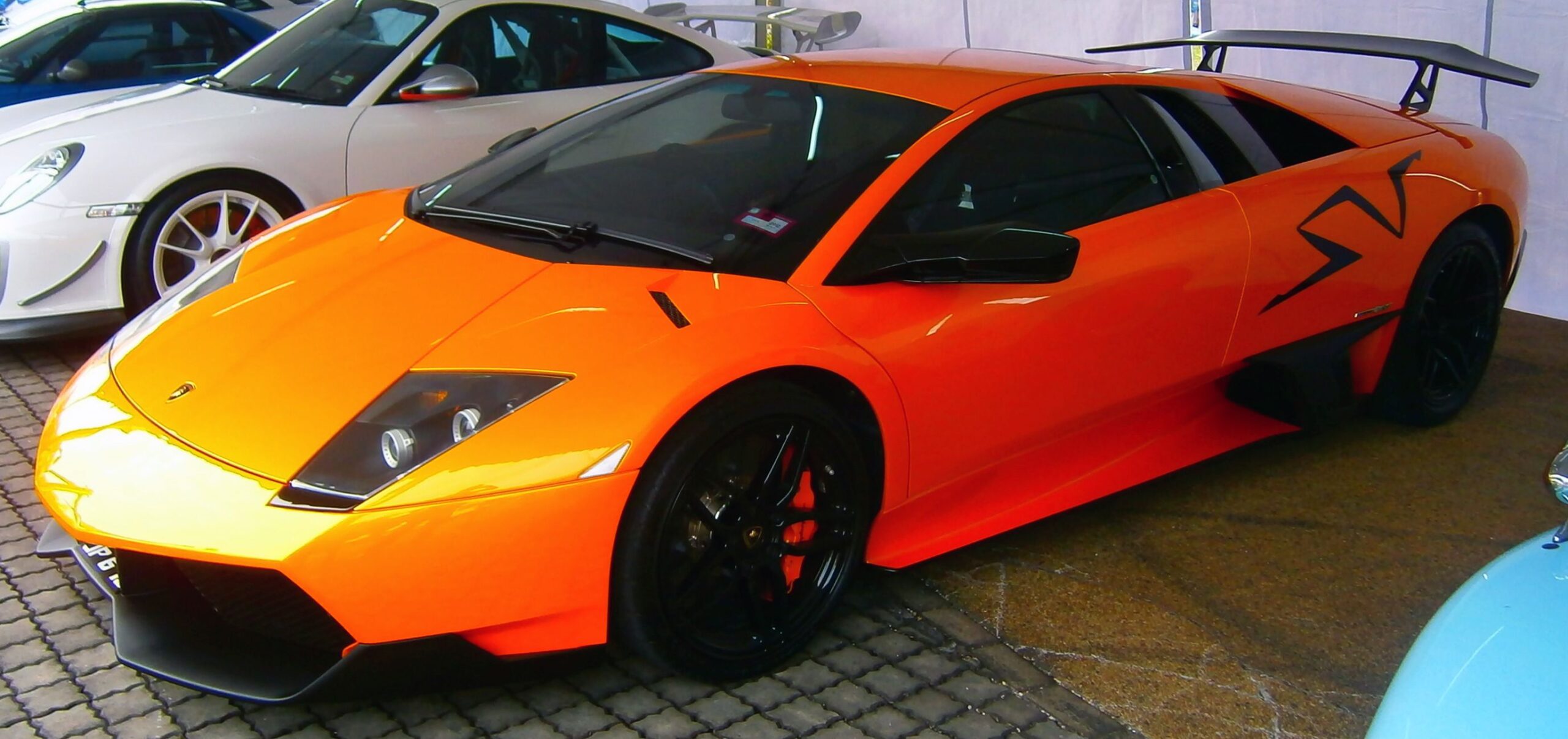
8. **Murciélago, Lamborghini**Few names evoke the raw power and theatrical presence quite like Lamborghini, and the Murciélago, produced from 2001 to 2010, truly exemplified this ethos. This magnificent beast ruled the supercar world for nearly a decade, defining an era with its aggressive styling and unapologetic performance. It was a vehicle that didn’t just demand attention; it commanded it, serving as a bold statement of automotive artistry and engineering.
At its heart, the Murciélago roared with a formidable 6.2L, later a 6.5L, V12 engine. This powerhouse delivered a driving experience that was both visceral and exhilarating, firmly establishing its dominance in the high-performance segment. The sheer scale of its engine capacity and the raw power it unleashed were hallmarks of Lamborghini’s philosophy, emphasizing an engine-forward direction that prioritized unadulterated speed and a thrilling soundtrack.
Beyond its mechanical might, the Murciélago was instantly recognizable by its dramatic scissor doors, a design cue that became synonymous with Lamborghini’s top-tier models. These doors, coupled with its overall dramatic styling, ensured that the Murciélago was not just a car, but a spectacle. It meticulously set the tone for Lamborghini’s future design language, pushing boundaries and solidifying its reputation for creating vehicles that are as much works of art as they are engineering marvels.
Read more about: Cristiano Ronaldo’s Epic Rides: A Deep Dive into the $25 Million Garage of a Football Legend!
9. **Dino Coupe, Ferrari**The Dino Coupe holds a very special place in Ferrari’s illustrious history, recognized as the marque’s first mid-engine road car. Produced between 1967 and 1973, this elegant machine represented a significant departure for the Italian powerhouse, both in its technical layout and its nomenclature. It was a car born from emotion, named after Enzo Ferrari’s late son, Alfredo “Dino” Ferrari, a tribute that imbued it with a unique emotional resonance.
Unlike the traditional V12 engines that defined Ferrari, the Dino featured a more compact yet potent 2.0L or 2.4L V6 engine. This mid-engine configuration, coupled with the lighter V6, allowed for exceptional balance and agile handling, offering a driving experience that was distinctively engaging and nimble. It provided a different kind of Ferrari thrill, one focused on finesse and driver connection rather than outright brute force, expanding the brand’s appeal.
Today, the Dino’s combination of exquisite beauty and spirited performance has elevated it to the status of a collector’s dream. Its gracefully sculpted lines, often credited to Pininfarina, have ensured its timeless aesthetic appeal. The Dino Coupe remains a cherished piece of automotive history, celebrated not only for its pioneering mid-engine layout but also for its profound beauty and the touching story behind its name, solidifying its legacy as an enduring icon.
Car Model Information: 2023 Honda Civic Sport
Name: Dino 206 GT,Dino 246 GT and GTS
Caption: Dino 246 GT
Manufacturer: Ferrari
Designer: Pininfarina,Aldo Brovarone,Leonardo Fioravanti (engineer)
Class: Sports car
Layout: Transverse engine,Rear mid-engine, rear-wheel-drive layout
Engine: Ferrari Dino engine
Successor: Ferrari GT4
Sp: uk
Categories: All articles with unsourced statements, Articles with short description, Articles with unsourced statements from September 2018, Cars introduced in 1968, Cars introduced in 1969
Summary: The Dino 206 GT, 246 GT and 246 GTS are V6 mid-engined sports cars produced by Ferrari and sold under the Dino marque between 1967 and 1974.
The Dino 246 was the first automobile manufactured by Ferrari in high numbers. It is lauded by many for its intrinsic driving qualities and groundbreaking design. In 2004, Sports Car International placed the car at number six on its list of Top Sports Cars of the 1970s. Motor Trend Classic placed the 206/246 at number seven in their list of the 10 “Greatest Ferraris of all time”.
Get more information about: Dino 206 GT and 246 GT
Buying a high-performing used car >>>
Brand: Ferrari Model: Dino Coupe
Price: $27,589 Mileage: 27,524 mi.
Read more about: 14 Convertibles from the ’60s and ’70s That Made You Feel Like a Movie Star
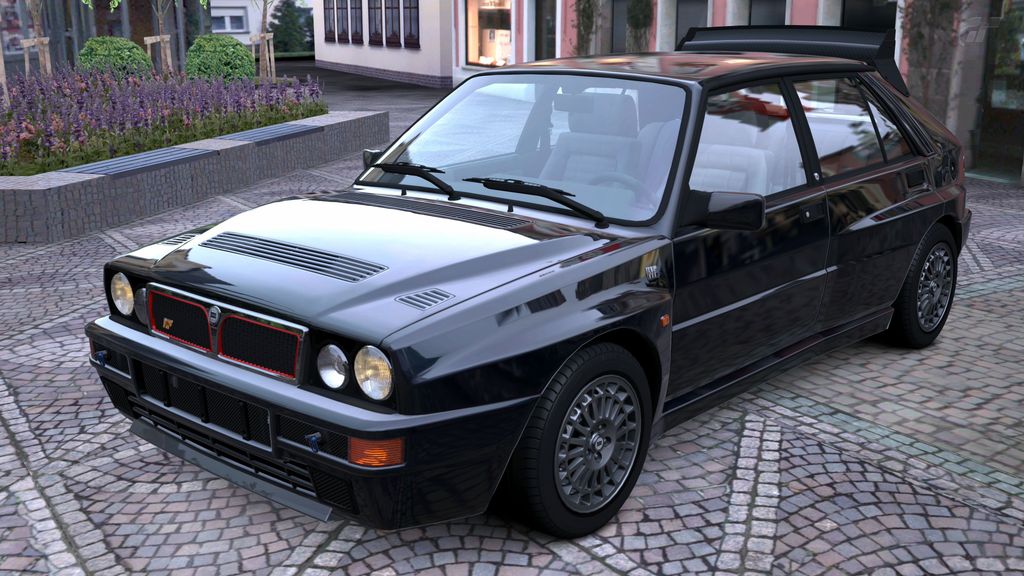
10. **Delta Integrale, Lancia**When it comes to rally racing legends, the Lancia Delta Integrale stands in a league of its own. Made from 1986 to 1994, this car wasn’t just competitive; it was utterly dominant, shaping what is often referred to as the “golden era of Group A competition.” Its aggressive stance, flared wheel arches, and formidable performance became synonymous with rally success, carving out a permanent place in the hearts of motorsport enthusiasts.
The Integrale’s unparalleled success on rally stages worldwide was largely thanks to its formidable turbocharged engine and an exceptionally advanced all-wheel-drive system. This combination provided incredible traction and explosive power delivery, allowing it to conquer diverse and challenging terrains with astonishing speed and precision. Its ability to grip and accelerate on gravel, tarmac, and snow alike made it virtually unstoppable, racking up numerous championship titles.
Even decades after its production ceased, the Lancia Delta Integrale remains legendary among enthusiasts. It epitomizes the spirit of a purpose-built racing machine that was also available to the public, blending cutting-edge technology with rugged reliability. Its lasting impact can be seen in the design and engineering philosophies of modern performance hatchbacks, proving that its influence extended far beyond the rally circuits to shape a generation of high-performance road cars.
Car Model Information: 2024 Ford Mustang GT
Name: Lancia Delta
Caption: Lancia Delta LX 1.3 (first generation, 1986–91 model)
Manufacturer: Fiat Auto
Production: 1979–1999,2008–2014
Class: Small family car
BodyStyle: Hatchback
Layout: Transverse engine,Front-engine, front-wheel-drive layout
Categories: 1980s cars, 1990s cars, 2000s cars, 2010s cars, All articles with dead external links
Summary: The Lancia Delta (stylized Lancia δ) is a small family car produced by Italian automobile manufacturer Lancia in three generations. The first generation (1979–1994) debuted at the 1979 Frankfurt Motor Show, the second generation (1993-1999) debuted at the 1993 Geneva Motor Show, and the third generation (2008–2014) debuted at 2008 Geneva Motor Show.
The first generation Delta dominated the World Rally Championship during the late 1980s and early 1990s. The homologation requirements of Group A regulations meant marketing road-going versions of these competition cars — the Lancia Delta HF 4WD and HF Integrale. A total of 44,296 Integrales were produced. Total production number of the Delta first generation was 478,645 cars.
Get more information about: Lancia Delta
Buying a high-performing used car >>>
Brand: Lancia Model: Delta Integrale
Price: $41,999 Mileage: 18,705 mi.
Read more about: The Ultimate Nineties Rewind: 15 Coolest Cars of the Decade That Still Fuel Our Automotive Dreams
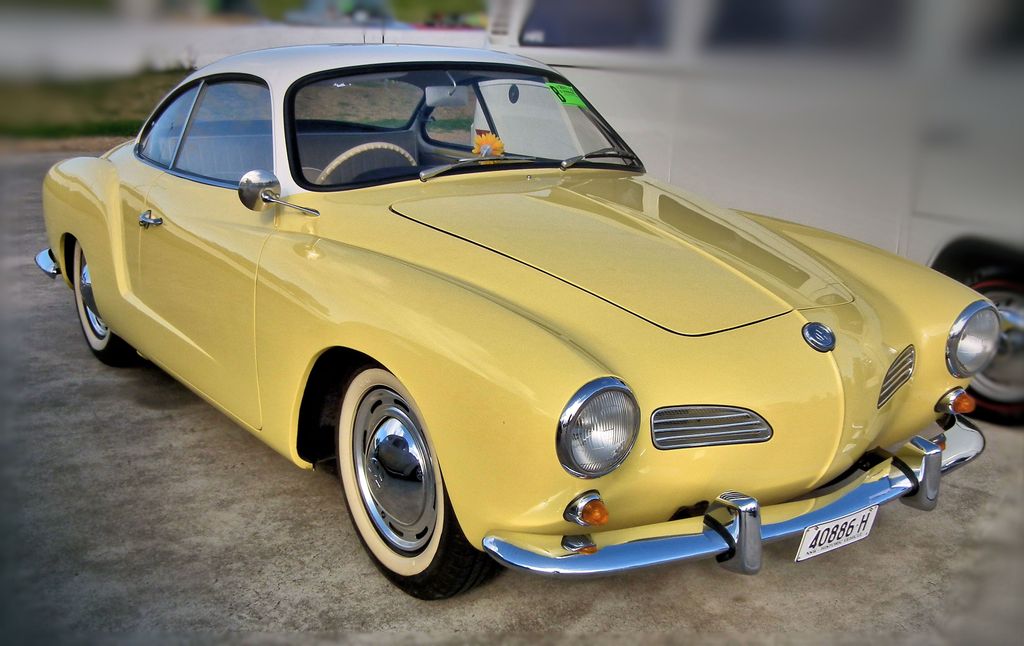
11. **Karmann Ghia, Volkswagen**For a brand primarily known for its utilitarian “people’s cars,” the Volkswagen Karmann Ghia was a striking departure, showcasing an unexpected blend of practicality and undeniable elegance. Built between 1955 and 1974, this two-door, 2+2 coupe and convertible perfectly combined Volkswagen’s incredibly reliable mechanical components with the exquisite, flowing lines of elegant Italian styling, creating a timeless masterpiece.
The genesis of the Karmann Ghia was a collaboration between the German coachbuilder Karmann and the Italian design house Ghia, resulting in a design that was both sophisticated and understated. Its gracefully sculpted curves and proportions were unlike anything else in Volkswagen’s lineup, giving it an air of exclusivity without demanding a premium price tag. This unique aesthetic ensured that it stood out in any crowd, capturing admiration wherever it went.
Decades on, the Karmann Ghia remains an icon, celebrated for its enduring beauty and charming character. It proved that a car could be both dependable and visually stunning, appealing to a broad audience who appreciated its blend of reliability and style. Its timeless curves and approachable nature ensure its place as one of the most beautiful cars of its era, still highly sought after by collectors and cherished by enthusiasts for its unique place in automotive history.
Car Model Information: 2024 Ford Mustang GT
Name: Volkswagen Types 14, 34, and 145
Caption: 1962 Type 14 VW Karmann Ghia
Manufacturer: Volkswagen
Production: Germany,Type 14: 1955–1974,Type 34: 1961/1962–1969,
445,238 total units built:,Coupé: 364,401 (Type 14 and 34),Cabriolet: 80,837 (all Type 14)
Brazil,Type 14: 1962–1971,TC (Touring Coupé): 1972–1975,
41,689 total units built:,Coupé: 23,393,Cabriolet: 177,TC (Touring Coupé): 18,119
Related: Volkswagen Beetle,Volkswagen Type 3,Puma (car manufacturer)#Volkswagen era
Class: Sports car
BodyStyle: convertible (car)
Engine: flat-4
Designer: Carrozzeria Ghia
Layout: RR layout
Successor: Porsche 914,Volkswagen Scirocco,Volkswagen SP2
Assembly: Osnabrück
Categories: 1960s cars, 1970s cars, All articles with unsourced statements, Articles with short description, Articles with unsourced statements from May 2023
Summary: The Volkswagen Karmann Ghia are a family of three overlapping sports car models produced by Volkswagen, marketed in 2+2 coupe (1955–1975) and 2+2 convertible (1957–1975) body styles, though German production ended one year before that in Brazil. Internally designated the Type 14 (1955–1975), the Type 34 (1962–1969), and the Type 145 TC (1972–1975; Brazil), the Karmann Ghia cars combined the floorpans and mechanicals of the Type 1 / Beetle or Type 3 ‘ponton’ models with styling by Italy’s Carrozzeria Ghia, and hand-built bodywork by German coachbuilding house Karmann.
The 1955 Type 14 Karmann Ghia was just the second Volkswagen passenger car ever produced, after the Beetle, and launched six years before the Type 3 notchbacks, fastbacks and Variants (squarebacks). They were faster and more expensive than the Beetle, but very cramped in the back, despite their wider, postwar and nearly slabsided body design. Two years later, in 1957, a convertible was added.
In 1961, the Karmann Ghia briefly lost its title of fastest Volkswagen, upon launch of the more powerful 1500cc Type 3 models, but later that year, Volkswagen, Ghia, and Karmann presented an all new Karmann Ghia – Type 34, using the Type 3’s floorpan and 1500cc powertrain. Made from 1962 to 1969, this had both new, more modern, angular and roomier bodywork; and a new, more luxurious interior, making it substantially more expensive than all other VW passenger cars. Additionally, the Type 34 was one of the world’s first cars with a power operated steel sunroof option. The Type 34 Karmann Ghia thus became VW’s range-topper again – costing up to twice the price of a Beetle – while the cheaper Type 14 remained in production. Only the latter offered a convertible.
Failure to offer the Type 34 in the United States – the Karmann Ghia’s most important market – combined with high pricing elsewhere likely contributed to limited sales, and after the type 14 also received the 1500cc engine in 1967, production of Type 34s was ended during 1969. Volkswagen of Brazil nevertheless looked for an alternative in its market segment, and so Carrozzeria Ghia was again commissioned, to design a third Karmann Ghia model, for the South American market, the Karmann Ghia TC (Touring Coupé), made in Brazil from 1972–1975. The result was a stylish, rakish fastback that offered good interior space for a 2+2 car.
For its final model year, the vestigial rear seat in the Type 14 was discontinued for North American models, as it lacked provisions for seat belts; all Karmann Ghias for 1974 were marketed strictly as two-seaters.
More than 445,000 Karmann Ghias were produced in Germany over the car’s production life, not including the Type 34 variant. Volkswagen do Brasil (Volkswagen Brasil) produced 41,600 Type 34s in Brazil for South America between 1962 and 1975.
Long noted for its exterior styling, the Karmann Ghia was designed with input from numerous individuals at Carrozzeria Ghia and was strongly influenced by Virgil Exner’s work, though all of its designers passed without a definitive individual styling attribution.
Get more information about: Volkswagen Karmann Ghia
Buying a high-performing used car >>>
Brand: Volkswagen Model: Karmann Ghia
Price: $41,999 Mileage: 18,705 mi.
Read more about: Beyond the Hype: 14 Classic Cars That Haven’t Held Their Value in Today’s Market
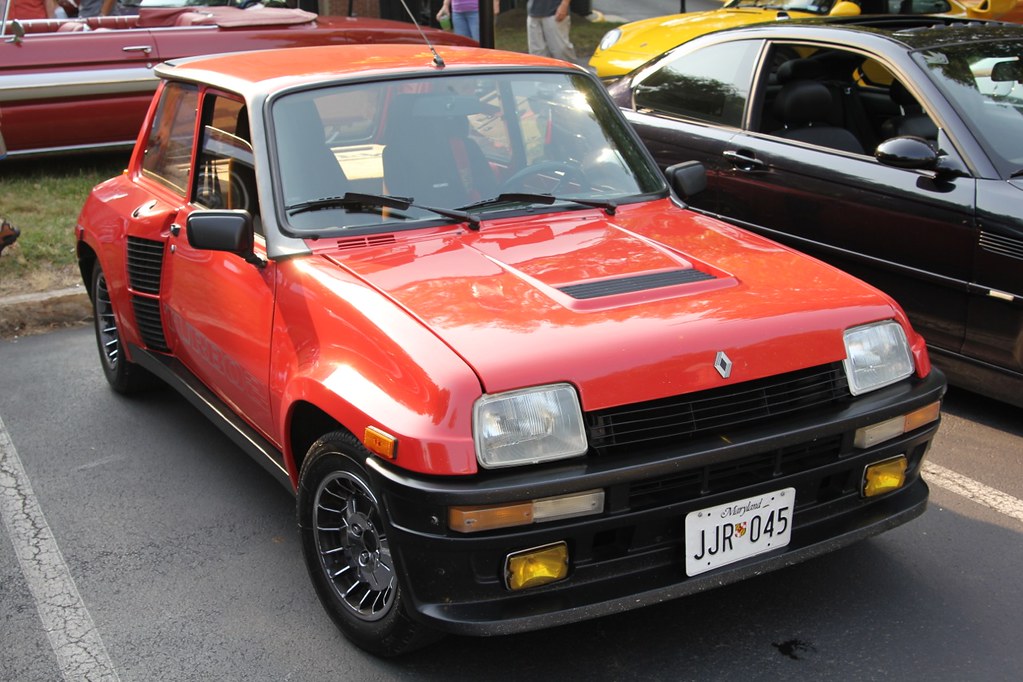
12. **Renault 4, Renault**The Renault 4, affectionately known as the ‘R4,’ was far more than just a car; it was a cultural phenomenon and a symbol of mobile freedom across Europe for decades. Produced from 1968 until the mid-1980s, it broke new ground by becoming Europe’s first mass-market hatchback, a design innovation that prioritized practicality, versatility, and accessibility for the average motorist. This groundbreaking approach made it an instant success.
Its revolutionary design featured a simple, robust construction, a spacious interior, and a versatile hatchback tailgate, which allowed for easy loading and unloading of cargo. This emphasis on utility, combined with its renowned affordability and mechanical simplicity, made the Renault 4 an indispensable staple across the continent. It was the perfect vehicle for families, tradespeople, and adventurers alike, capable of tackling various tasks with admirable ease.
The Renault 4’s enduring legacy lies in its pioneering spirit. It democratized car ownership for countless individuals and families, proving that a reliable and adaptable vehicle didn’t have to be expensive or complicated. Its lasting influence can be seen in the countless hatchbacks that followed, solidifying its status as a benchmark for practical automotive design. The R4 represents a triumph of functional design, its charm and utility still celebrated today.
Car Model Information: 2024 Ford Mustang GT
Name: Renault 4
Alt: Five-door car with steel wheels and door mirrors and a two-box body style
Caption: 1984 Renault 4 GTL
Manufacturer: Renault
Production: 1961–1992 (until 1994 in Slovenia),Over eight million units
Class: B-segment,Economy car,family car
BodyStyle: hatchback
Aka: Renault R4,Renault 4L (Quatrelle),Renault R3
Assembly: ubl
Layout: MF layout
Engine: Renault Billancourt engine#603 cc,Renault Billancourt engine#747 cc,Renault Billancourt engine#782 cc,Renault Billancourt engine#845 cc,Renault Cléon-Fonte engine#CxC,Renault Cléon-Fonte engine#CxE
Transmission: Manual transmission
Length: cvt
Width: cvt
Height: cvt
Weight: cvt
Wheelbase: cvt
Predecessor: Renault 4CV
Successor: Renault 4 E-Tech
Related: Renault 5,Renault 6,Renault 7,Renault Rodeo
Sp: uk
Categories: 1970s cars, 1980s cars, 1990s cars, All articles needing additional references, All articles with unsourced statements
Summary: The Renault 4, or R4 in short (and 4L, pronounced “Quatrelle” in French French pronunciation: [ˈkatʁɛl]), is an economy family car, built by the French company Renault from 1961 to 1994. Although the Renault 4 was first marketed as a short estate or wagon, its minimal rear body length, and its top-hinged, single-piece tail-gate means that it is now recognised as the world’s first mass-produced hatchback car.
Also, it was the first time Renault had used a front-wheel drive layout in a family car, the first in a string of Renault’s and other carmakers’ front-wheel drives that all still used longitudinal engine placement, including Renault’s models R5, R6, and R16; joining Citroën’s 2CV (the Renault 4’s prime competition), and Citroën Ami and DS, as well as models from Audi and Saab, before most, including Renault, switched to transverse engines, like on the 1959 Mini. A bare-bones, entry-level Renault 3, or R3 was also offered in 1961/1962.
The car was launched when decades of economic stagnation gave way to growing prosperity in France, and surging car ownership. The first million cars were produced by 1 February 1966, less than four and a half years after launch. Eventually over eight million were built, in twenty factories on four continents. The Renault 4 was a commercial success because of the timing of its introduction, and the merits of its value for money design. In early 2020, the 33-year production run of the Renault 4 was counted as the seventeenth most long-lived single generation car in history.
Additionally, the R4 provided a lot of (initial) internals and mechanical components to the later, more fashionable, and also very successful Renault 5.
Get more information about: Renault 4
Buying a high-performing used car >>>
Brand: Renault Model: Renault 4
Price: $41,999 Mileage: 18,705 mi.
Read more about: From Chrome Karts to Custom Monsters: 14 Wild Rides of the Rich and Famous That’ll Make You Say ‘Wait, What?!’
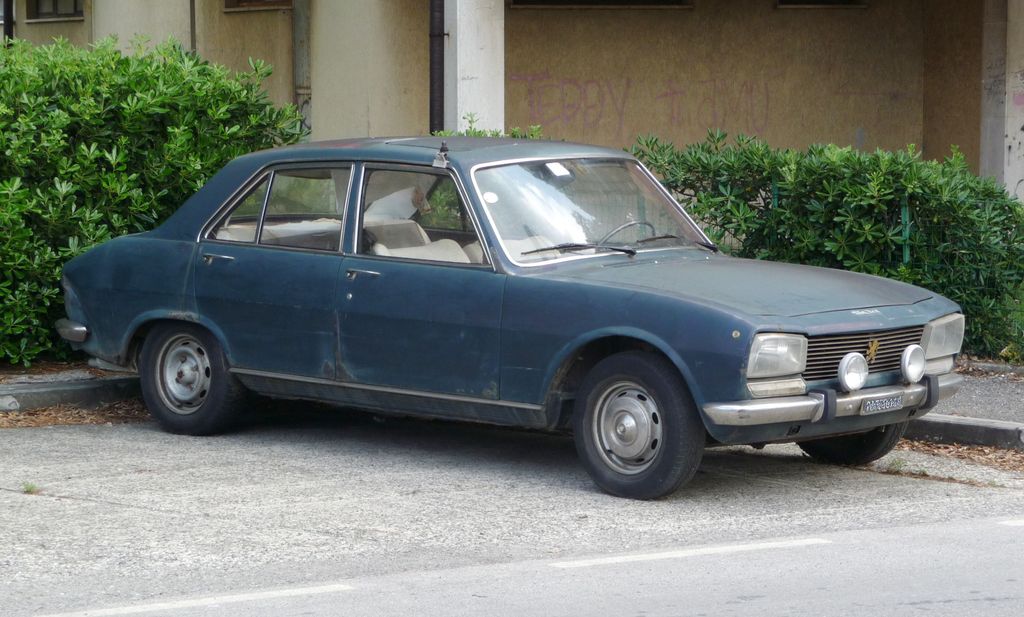
13. **Peugeot 504, Peugeot**The Peugeot 504, launched in 1968, was an embodiment of French automotive engineering focused on comfort, durability, and reliability. This sophisticated family car enjoyed an incredibly long and successful production run, remaining in production through the 1980s in Europe and notably continuing into the 2000s in some international regions, a testament to its robust build and timeless appeal, particularly in challenging environments.
What set the 504 apart was its exceptional ride quality, largely attributed to its meticulously engineered suspension system. It glided over rough roads with a composure that few of its contemporaries could match, providing a supremely comfortable ride for both driver and passengers. This, coupled with its outstanding build quality and rugged mechanicals, earned it a stellar reputation for longevity and dependability, making it a favorite for extended use.
The Peugeot 504 was not merely a comfortable cruiser; it was also praised for its durable construction and ability to withstand demanding conditions, particularly in African and South American markets where it gained legendary status. Its blend of a smooth ride, robust engineering, and practical design has ensured its place as a revered classic, showcasing Peugeot’s commitment to creating vehicles that were not only aesthetically pleasing but also inherently tough and enduring.
Read more about: Beyond the Mainstream: 15 Wild Classic Car Features Automakers Left in the Dust and Why You Won’t See Them Again
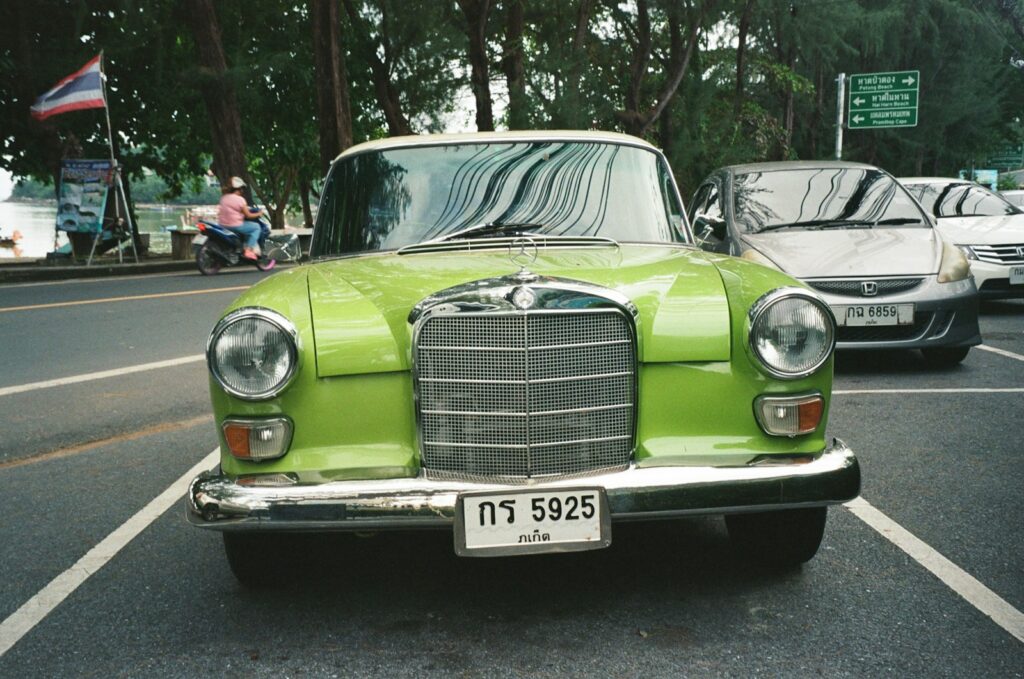
14. **Talbot Tagora, Talbot (Peugeot)**The story of the Talbot Tagora is a poignant one, representing an ambitious attempt that ultimately faced a challenging market reception. This executive sedan, produced for a very brief period from 1980 to 1983, was launched under the Talbot brand after PSA took over Chrysler Europe. It was intended to be a flagship model, showcasing the new combined entity’s engineering capabilities and design aspirations in the competitive executive car segment.
Despite possessing solid engineering and a contemporary, albeit conservative, design for its time, the Tagora struggled to find its footing in the market. Its sales performance was significantly below expectations, with fewer than 20,000 units built before production was quietly dropped. This low production volume makes it a rare sight today, a testament to its short lifespan and limited commercial success.
The Tagora’s commercial failure can be attributed to a confluence of factors, including intense competition from established rivals and a brand identity still in transition after the Chrysler Europe acquisition. Nevertheless, it remains an intriguing footnote in automotive history, symbolizing the challenges faced by car manufacturers navigating corporate mergers and evolving market demands. Its brief existence serves as a reminder that even well-engineered vehicles can sometimes fail to resonate with the public.

15. **Trabant, VEB Sachsenring (East Germany)**The Trabant, produced by VEB Sachsenring in East Germany from 1957 to 1989, is arguably one of the most distinctive and historically significant cars on our list, albeit for reasons quite different from its luxury counterparts. Often affectionately, or sometimes derisively, known as the “Trabi,” this humble vehicle was built as an affordable means of transport for the citizens of the Eastern Bloc, becoming a poignant symbol of an entire era.
What made the Trabant truly unique was its construction: it utilized a two-stroke engine and a body made from Duroplast, a type of recycled plastic. This material choice was a necessity due to steel shortages in East Germany, leading to a lightweight but famously simple and durable shell. While its two-stroke engine was known for producing prodigious amounts of smoke and a distinctive sound, it offered basic, reliable, and accessible mobility for millions.
The Trabant’s simplicity and its widespread use cemented its status as an enduring symbol of the Eastern Bloc era. For many, it represented personal freedom and aspiration within the confines of a centrally planned economy. Though it was often the subject of jokes in the West for its perceived primitive nature, the Trabant holds a place of deep nostalgia and historical significance, celebrated today for its unique role in a bygone automotive and political landscape. It truly captured the spirit of its time.
Car Model Information: 2023 Honda Civic Sport
Name: Trabant 1.1
Caption: Trabant 1.1 Saloon
Manufacturer: VEB Sachsenring
Production: May 1990 – April 1991
Assembly: Zwickau
Class: B-segment
BodyStyle: 2-door saloon (Limousine),2-door estate (Universal),Doorless ATV (Tramp)
Layout: Front-engine, front-wheel-drive layout
Platform: Trabant 1.1
Engine: List of discontinued Volkswagen Group petrol engines#GL,Overhead camshaft engine,Straight-four engine
Transmission: 4-speed manual
Wheelbase: 2020 mm
Abbr: on
Length: 3410 mm
Width: 1510 mm
Height: 1440 mm
Weight: 700 kg
Predecessor: Trabant 601
Sp: uk
Categories: 1990s cars, Articles with short description, CS1 Czech-language sources (cs), CS1 German-language sources (de), Cars discontinued in 1991
Summary: The Trabant 1.1 (German: [tʁaˌbant ˈʔaɪns pʊŋkt ˈʔaɪns]) is the fourth and final series production model of the East German Trabant series, made by VEB Sachsenring Automobilwerke Zwickau. Unlike its predecessors, which have a two-stroke engine, the Trabant 1.1 has a four-stroke engine. In total, 39,474 units of the Trabant 1.1 were made from May 1990 to 30 April 1991. This makes the 1.1 the rarest Trabant model.
Most Trabant 1.1 were exported to Poland and Hungary. In Germany, it did not sell very well; in 1990, the 1.1 saloon was offered at a price of DM 10,887, which, at the time, was considered overpriced.
Get more information about: Trabant 1.1
Buying a high-performing used car >>>
Brand: VEB Sachsenring Model: Trabant
Price: $27,589 Mileage: 27,524 mi.
These automotive legends, each a product of their unique era and circumstance, may no longer be rolling off the assembly lines, but their profound influence is impossible to ignore. They didn’t just transport people; they pushed boundaries in design, technology, and performance, unequivocally earning their distinguished places in the grand tapestry of automotive history. From the racetracks of the World Rally Championship to the bustling streets of post-war Europe, these vehicles exemplified innovation and captured the spirit of their times. Collectors, devoted fans, and prestigious car shows around the globe continue to celebrate them with fervent passion, unequivocally proving that their legacies endure vibrantly, long after the factories stopped building them. Looking back at these magnificent classics, we are powerfully reminded that cars are profoundly more than mere machines—they are cultural icons, silent storytellers that vividly capture the very essence and spirit of their era.

